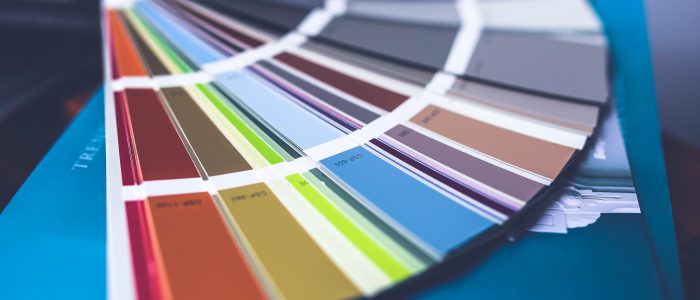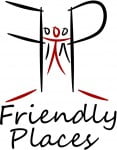How to create the perfect flyer or poster

When it comes to advertising your event or programme, it’s important not to overlook the classics – a flyer or poster out on the street can be much more useful in reaching local people that care about what you’re doing than all the Tweets or Facebook Posts you could ever make. But if you’re a smaller organisation where money’s tight, here are some helpful tips to get you started on designing a flyer or poster using what you have to hand.
Planning it out
Before you begin worrying about how your flyer or poster will look, the most important thing to do is to consider what action you want your target audience to take from it. And so, what information do they need to know?
Note down the key points about your event or programme – think about why people should come and what they’re going to get in exchange for giving you their time. It could even just be ‘a fun day out’ – but let them know why it’s going to be fun! You can use the 5Ws as a guide to make sure you have the crucial elements – who, what, when, where, why.
Make sure you’re focusing on the most important information – no-one will take the time to read a flyer that’s covered in a giant wall of text explaining every last minutiae of your event. And always put yourself in your target audience’s shoes – there might be some part of your event that means the world to you, but you need to consider if it will mean the same to someone else.
What to use
For those looking to make a flyer on a budget, it can be hard to find a suitable program to use. While programs specifically used for design work (such as Adobe’s InDesign) are the best, they’re also the most expensive (by a wide margin!).
Microsoft Word is probably the most commonly used program for design – however, anyone who’s tried laying out anything remotely ‘designed’ in Word has been likely to find it less than ideal. Instead, Microsoft Powerpoint is actually much more suited to the task, as it allows for text and images to be easily laid out, using a similar approach to professional design programs – all you need to do is set the slide size to match the desired paper size. For those without Microsoft Office, Google Sheets offers many of the same features. While not covered here, there are also a range of online designers that offer free access, such as Canva and Adobe Express.
Designing your masterpiece
Draw the eye with a large striking headline at the top of your flyer/poster. It’s important to quickly grab someone’s attention. Usually, it’s best to take a direct approach and tell them exactly what you’re offering (“FREE FUN DAY!”), but you can also try piquing their interest with something like a question (“Want to be happier and healthier?”).
Photos are also a great way to get someone’s attention – combining it with your headline will make sure they take notice of what you’re offering. If you’ve not got photos of your own to hand, there are plenty of sites online that offer free ones for you to use – such as Pexels, Unsplash, Flicker’s Creative Commons, FreeImages, Pixabay, etc.
Make sure your design isn’t too busy. Ensure there’s enough space around your text and images. If everything is crammed together, it makes it hard to read and will tend to turn your audience off. Similarly, don’t go overboard with colours and fonts. Ideally, you really only need two fonts – one for the big ‘heading’ style text, and one for the regular ‘body’ text. And limit yourself to a small colour palette, using shades that complement each other – you can use online colour wheels like Adobe’s to help choose suitable combinations.
Pay close attention to making sure your design is readable. This includes avoiding those overly-fancy fonts (some ‘script’ fonts – ones that emulate handwriting – can be tricky to read for example!) and ensure there’s a good contrast between text and the background colour. Note that thin fonts or light-coloured text on a dark background can be particularly hard for some people to read. And for posters, try printing out a copy and viewing it from a distance to see how it’ll look to people passing by and whether you can read the important information. Be self-critical and always ask for a friend’s opinion too.
It’s vital for your flyer or poster to have a clear and prominent call to action – this is what you want the reader to do. Generally, this needs to be concise and to the point – basically, an instruction to them. If people have to register to get into your event, you have to tell them plainly and simply: “Sign up now at [website]”. And make sure your call to action is obvious to the eye – a different colour or a box to pull it out of the rest of the design.
The end result
If you plan to print your flyer on your office printer, make sure you’re aware of its limitations. First of all, you won’t be able to print to the edge of the paper – so your fancy full-page photo design will end up with a white border around it. Unfortunately, that’s just a fact of life when dealing with home printing; instead, try and think how you can work that space into your design – for example, surround text in multiple coloured boxes on a white background hides the fact that the white border even exists. Some printers may also have issues with large areas of colour, making it look uneven and patchy – make sure to test it and see what works best on yours.
On the other hand, if you’re prepared to spend a bit more money to get your design printed professionally, there’s a few more things to consider. In this case, you can readily have your design fill the entire page, but you’ll need to make your design slightly bigger than it needs to be – this extra area, usually about 3mm in each direction, is known as ‘bleed’ and is trimmed off at the end. You’ll also want to make sure you save your design as a PDF, to ensure that it shows up just as you intended.
Conclusion
Creating flyers and posters can be fun for some, but stressful for others. If it’s not for you, then do get in touch with us at FaithAction. We offer a competitively priced flyer and web design and print service for all our members. Give us a call on 0845 094 6350 or email me at [email protected].


